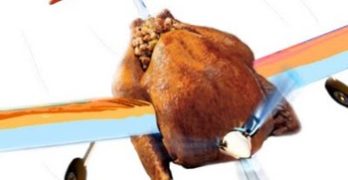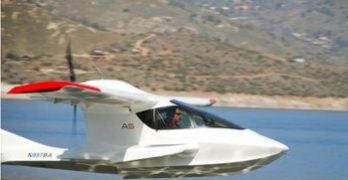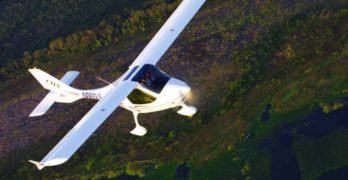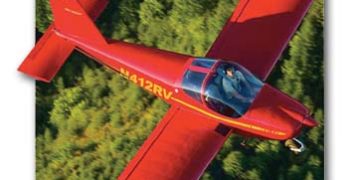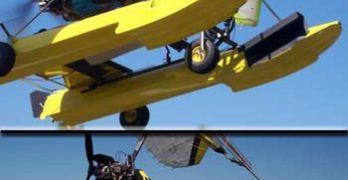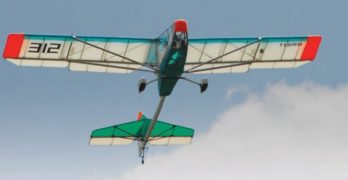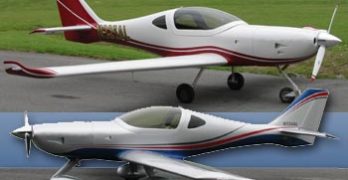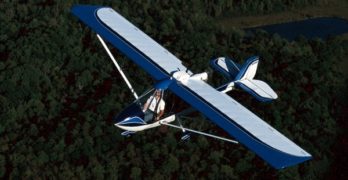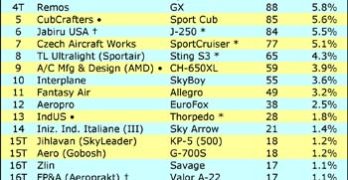“It’s a bird! It’s a plane! Actually, it’s both…and edible!” *** Fresh but larger in girth from the great American pastime of massive calorie infusions and days of leftovers (turkey sandwich/curried Turkey/cranberry yogurt surprise (don’t ask) etc., let’s see whassup around the old info-hangar. *** Looking to e-gab with other light sport enthusiasts? There are some cool sites around with lots of hands-on topics such as training, maintenance, fun flying and more. Here are a couple I’ve come across that seem well-attended: Sport Pilot Talk and South Africa’s AvCom with a look at Light Sport and GA flying in the southern Hemisphere *** Lots of links here to tons of general LSA sites : Light Sport Aircraft HQ *** Flight training resource guide: Pilot Journey *** Experimental/homebuilt and light sport discussions (Jabiru and Rotax forums here): Wings Forum *** BTW: Sebring’s annual Light Sport Aviation Expo is kicking off Jan.
Search Results for : MG 21
Not finding exactly what you expected? Try our advanced search option.
Select a manufacturer to go straight to all our content about that manufacturer.
Select an aircraft model to go straight to all our content about that model.
CEO Makes ICONic Flight
The Icon A5 made a big splash, you should excuse the pun, at last year’s Oshkosh Airventure. The high-profile marketing campaign posits that there’s a whole generation of high-energy recreational enthusiasts looking to own their own flying motorcycle/jet ski, and they’re putting up some hefty investment capital to back up their vision. *** The company took another major step toward finding out whether that vision has legs when ICON Aircraft founder and CEO Kirk Hawkins made his first flight in the prototype on March 11, 2009, as part of the company’s user trials. The flight took place at Lake Isabella in Kern County, CA, site of 45 earlier test hops. *** “I walked into the test flight completely focused on evaluating the aircraft as a potential customer,” said Hawkins. “As an experienced pilot who’s flown everything from ultralights to fighter jets, I expected my reaction to be, ”˜Yep, it flies just like I expected.
Redesigned Flight Design CTLS
All photos by EAA Chief Photographer, Jim Koepnick
This article appears on ByDanJohnson.com thanks to permission granted by EAA and the willingness of author, Ed Downs. I’ve had the pleasure to fly with many expert pilots but the very best aircraft checkout I’ve ever received came from Ed. He’s a good pilot, that’s a given. But he is also very adept at giving you a solid expectation of what to expect. I think you’ll agree after you read this article. –Dan Johnson *** Note this article is presented without charge.
Are LSA Growing Up?
New special light-sport aircraft (SLSA) enter the
market on an almost weekly basis. Many of the
early SLSA entrants were makeovers of existing
European advanced ultralight designs or adapted
versions of post-World War II training airplanes.
Flight Design USA has now introduced the CTLS,
defined as a second-generation S-LSA from the
German-based Flight Design GmbH. Is this new
S-LSA better than the first CTs sold?
Van’s RV-12 is SLSA #100; Here Come the ELSA ’12s
[UPDATE: The Krucker Cygnet won approval on July 3rd, making that weight-shift LSA #99… so Van’s RV-12 is technically the #100 LSA model to win an airworthiness certificate. It was previously reported as #99.] The top-selling kit airplane producer, Van’s Aircraft of RV-xx fame, secured an airworthiness certificate for their fully-built RV-12 Special Light-Sport Aircraft on July 21, 2009. And the next day, the company’s East Coast representative, Mitchell Lock, got an ELSA certificate for his RV-12. EAA reported that 250 RV-12s are under construction around the world. *** So, quickly, Van’s looks ready to dominate the ELSA community that has been waiting to take off. True, thousand of ELSA are flying today — many more than SLSA at present — but that’s because so many “fat ultralights” were converted to ELSA status under FAA’s now-expired grandfather period. *** Van’s reports that it will take 600-900 hours to complete an RV-12 to unpainted stage, so the rush of RVs into the LSA fleet may not be swift, but they’ll just keep coming.
LSA #100 Reached! …in Less Than Five Years
Triple digits! In five years the LSA industry has reached SLSA model #100. Actually, here’s another one that slipped by our radar. Info now shows SLSA #99 was the Krucker amphib trike named Cygnet and Van’s RV-12 was technically #100. Our SLSA List shows Special Light-Sport Aircraft in order of their approval. *** “We got our SLSA completed 3 July 2009,” wrote U.S. representative, Michael Percy, of XL Kites. This means the Cygnet he imports was approved a couple weeks earlier than the Van’s RV-12 on July 21st, which came one day after the fifth anniversary of the new rule announcement (July 20th, 2004). *** One hundred models approved in such a short time has no comparison in worldwide aviation history. In fact, reaching #100 only took 4.3 years because the first approval occurred on April 7th, 2005 …that’s two new models every single month!
Happy Birthday LSA!
By Susan Parson
Photos by H. Dean Chamberlain
It may seem like it started only yesterday, but the Sport Pilot/Light-Sport Aircraft
rule (SP/LSA) celebrates its fifth “birthday” this summer. In many families,
making a “how-tall-are-you-now” mark on the wall is a time-honored birthday
tradition. In keeping with that concept, this article reviews and celebrates the mark
SP/LSA has made since it joined the aviation family back in 2004.
My, How You’ve Grown!
In developing the SP/LSA rule, FAA’s intent
was to increase safety by closing gaps in existing
regulations, accommodate advances in technology,
provide for the manufacture of light-sport aircraft
that are safe for their intended operations, and
several other purposes. A key idea was to make it
possible for more individuals to experience sport
and recreational aviation in a manner that is not
overly burdensome, but still safe.
Today, more than 2,000 individuals have
earned sport pilot certificates, and numerous
others have earned sport pilot privileges.
Able Flight LSA Team Crosses U.S. in 17 Hours
Cross this big country east to west in a day? …in a Light-Sport Aircraft? Yup!
On June 8, pilots Matt Hansen and Jessica Scharle successfully completed a transcontinental flight in Peregrine FA-04, dashing 1,813.5 nautical miles from Florida to California. After making five stops along the way the duo touched down at Gillespie Field near San Diego at 10:22 PM, marking an elapsed time of 19 hours and 21 minutes, which includes time for fuel stops. Total flying time was just over 17 hours.
They may have accomplished the feat to help nonprofit Able Flight in its mission to assist disabled folks learn to fly, but I think these twentysomething pilots showed they have the right stuff. That’s even more obvious when you hear Jessica Scharle courageously overcame a rare medical condition that fused almost every joint in her body. Nearly immobilized at one time, numerous surgeries, years of physical therapy, and personal determination helped Jessica become completely independent.
Lightning Fast; Arion Earns SLSA Before Sun ‘n Fun
After selling 40 aircraft under the Experimental Amateur Built (EAB) rule, Arion has now completed their SLSA approval just in the nick of time before the season-launching Sun ‘n Fun starts. Welcome to Lightning — SLSA #96 — from Arion Aircraft, which is our 69th company to enter production of Light-Sport Aircraft. *** Lightning got its start back when Jabiru-man Pete Krotje, his son Ben, plus Nick Otterback were dealers for the Spanish Esquale. That lead to the lovely low-wing Lightning though the design borrows from several light aircraft. It may sound like an organic development but the results are definitely worthy. I was highly impressed with a flight in an earlier EAB model, which did not have the speed limitations of LSA. “Extra wing area was added to bring wing loading and stall speeds into compliance with the applicable standards,” said Nick. *** Arion won approval on April 15, 2009.
Modestly-Priced, Easy-Flying Challenger Series
For 21 Years, Quad City’s Challenger has proved a good choice.
It’s enough to create a serious case of envy among producers vying for the market the Challenger seems to own year after year. Even in 2003, a slow year for all aircraft manufacturers, Quad City Ultralight Aircraft pumped out another 120 kits. Most light-sport aviation companies would consider that an excellent performance. For Quad City, it was a down year!
The venerable company from the Quad Cities area of Iowa, near the Illinois border, has put more than 3000 aircraft in the air. Van’s Aircraft has done even better, and Quicksilver has more than 10,000 ultralights flying, but the Challenger is clearly one of the industry’s leaders. And the company has enjoyed the same leadership since it was founded more than two decades ago.
Despite this success, Quad City maneuvers rather quietly. Last year the company celebrated 20 years of operation, yet many ultralighters and most aviators were unaware of the accomplishment.
Enroute to Sebring! Leaving 2008, Arriving 2009
Agreement is widespread welcoming a new year; 2008 was hard on almost everybody…around the world. The new year may bring continued turbulence, but a feeling that things are starting to change is prevalent, based on my conversations with dozens of LSA professionals in preparation for this year’s Fifth Annual Sebring LSA Expo. From various locations around the country, vehicles and airplanes are headed to Florida — where, by the way, 60-degree temperatures are expected to warm those from the deeply cold north. *** In this SPLOG, I present year-end information which completes the report posted earlier. We hope for a better 2009 and a much-improved 2010; nonetheless, the LSA fleet continued to expand in 2008, with a net increase of 36% (though growth slowed sharply from the 98% pace achieved in 2007 — as the fleet enlarges, it becomes harder to maintain the high percentage growth).
- « Previous Page
- 1
- …
- 77
- 78
- 79
- 80
- 81
- …
- 94
- Next Page »


